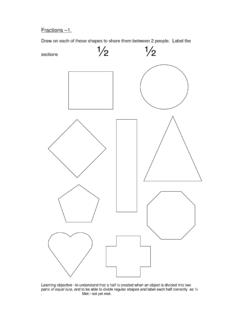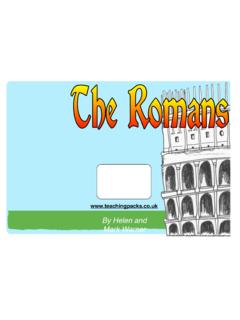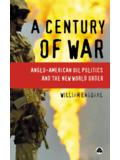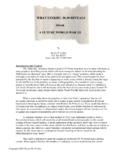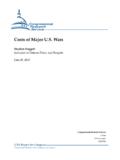Transcription of World War II Fact Cards - teachingideas.co.uk
1 World War II began on the 3rd of September 1939, when Britain declared that it was at war with Germany. Two days earlier, Germany had invaded Poland. Images: ThinkStock VE (Victory in Europe) day is commemorated on the 8th of May. On this day in 1945, Germany surrendered and the war in Europe ended. VJ (Victory in Japan) day is commemorated on the 15th of August. Japan surrendered on this day in 1945, ending the Second World War. Images: ThinkStock About 550 of the 2,900 RAF pilots who served in The Battle of Britain (July - October 1940) were not British. They came from Commonwealth Countries and countries under Nazi occupation. During World War II, around 800,000 children were evacuated from major British cities to protect them from air raids.
2 Most went to live in the countryside, but some were sent Images: ThinkStock Evacuees were sent on their journey with a small bag of essentials (including a gas mask) and a label pinned to them, stating who they were and where they were going. During the Blitz (September 1940 - May 1941) many public buildings were used as air raid shelters, including London Underground stations and parts of Cardiff Images: ThinkStock The British government ordered a blackout at night so that German bombers could not be helped by lights on the ground. The street lamps were switched off and people had to cover their windows with thick black material. From the 26th of July 1942, sweets were rationed.
3 Each person could only buy a certain amount of sweets each month. At one point, you could only buy 227g (8oz) of sweets a month! Images: ThinkStock Food rationing began in 1940, because the war meant Britain had to cut the amount of food that was bought from other countries. Some foods (for example meat) were still rationed as late as 1954! From 1941 unmarried women were "called up" and either had to join the armed forces or work in industry to support the war effort. Previously these jobs would have been done by men. Images: ThinkStock War time communications were sent in code. A team of codebreakers, based at Bletchley Park in England, found a way to break the code from German "Engima" machines and this is believed to have shortened the war.
4 It is believed that about 60,000,000 people died during World War II. Around 40,000,000 of these were civilians. Images: ThinkStock The Nazis murdered millions of people during the Holocaust, because they wanted to wipe out some religious and racial groups. Six million Jewish people were killed, as well as other groups including disabled people and Roma. WWII was fought between the Axis and the Allies. Lots of other countries were involved, but the main Axis powers were Germany, Italy and Japan, while the main Allied powers were Britain, the USA, France, Russia and China. Images: ThinkStock During the war a lot of the news was censored. This means that the government controlled the information available so that the enemy could not find out what was really going on.
5 Before D-Day, the British set up fake planes and tanks in the South East to make it look like they were planning to cross the channel at Calais. In fact they landed on the beaches of Normandy. Images: ThinkStock On D-Day (6th of June 1944) the Allies parachuted troops into Northern France and then landed ground troops on the beaches. The troops liberated the people of Northern France from German occupation. The United States entered the war on the 8th of December 1941, the day after a Japanese attack on their Naval Base at Pearl Harbour. Images: ThinkStock Atthough it is known as a World war, some countries (including Spain, Sweden and Switzerland) chose to remain neutral during the war.
6 They did not join either Images: ThinkStock


